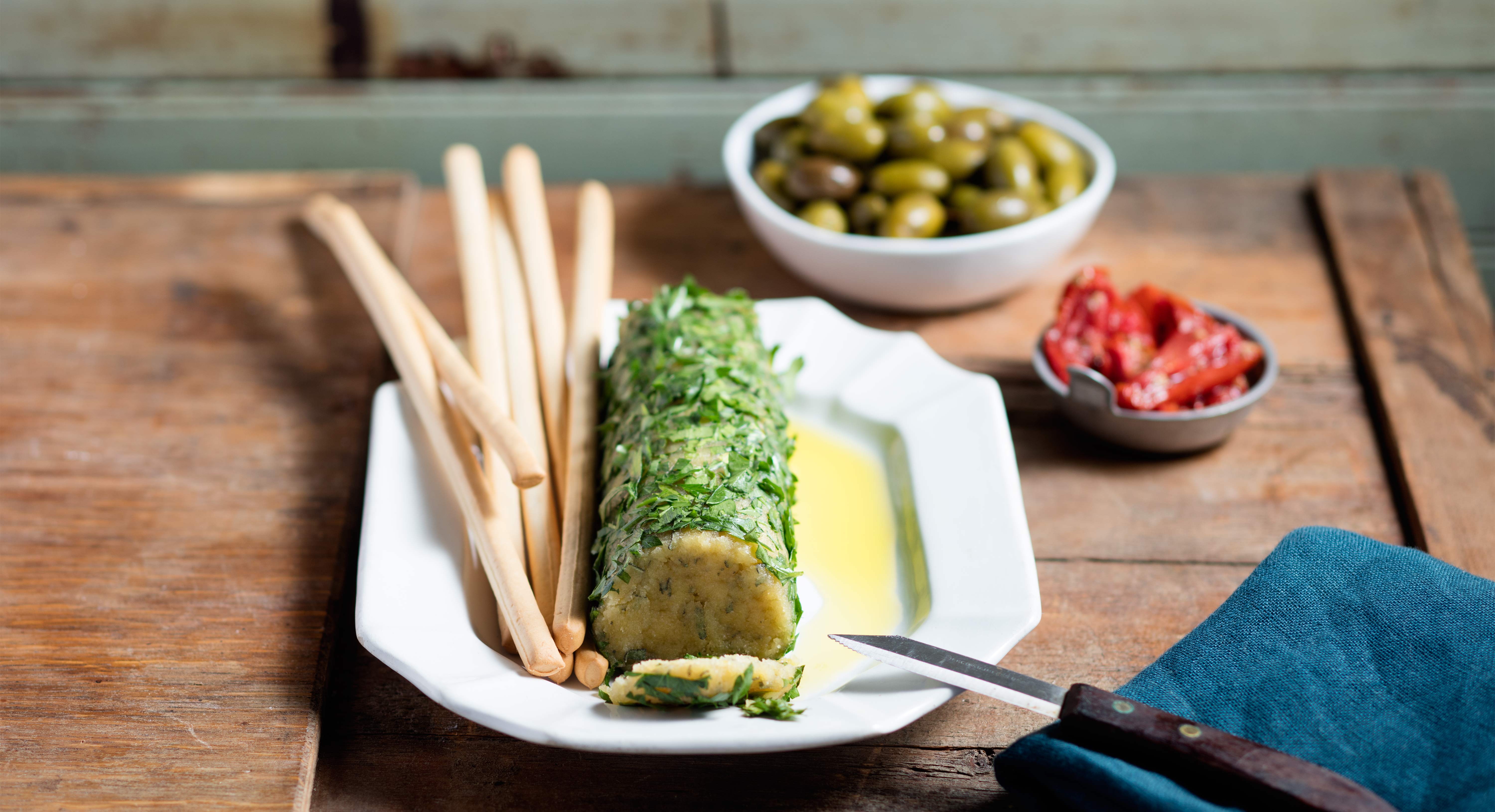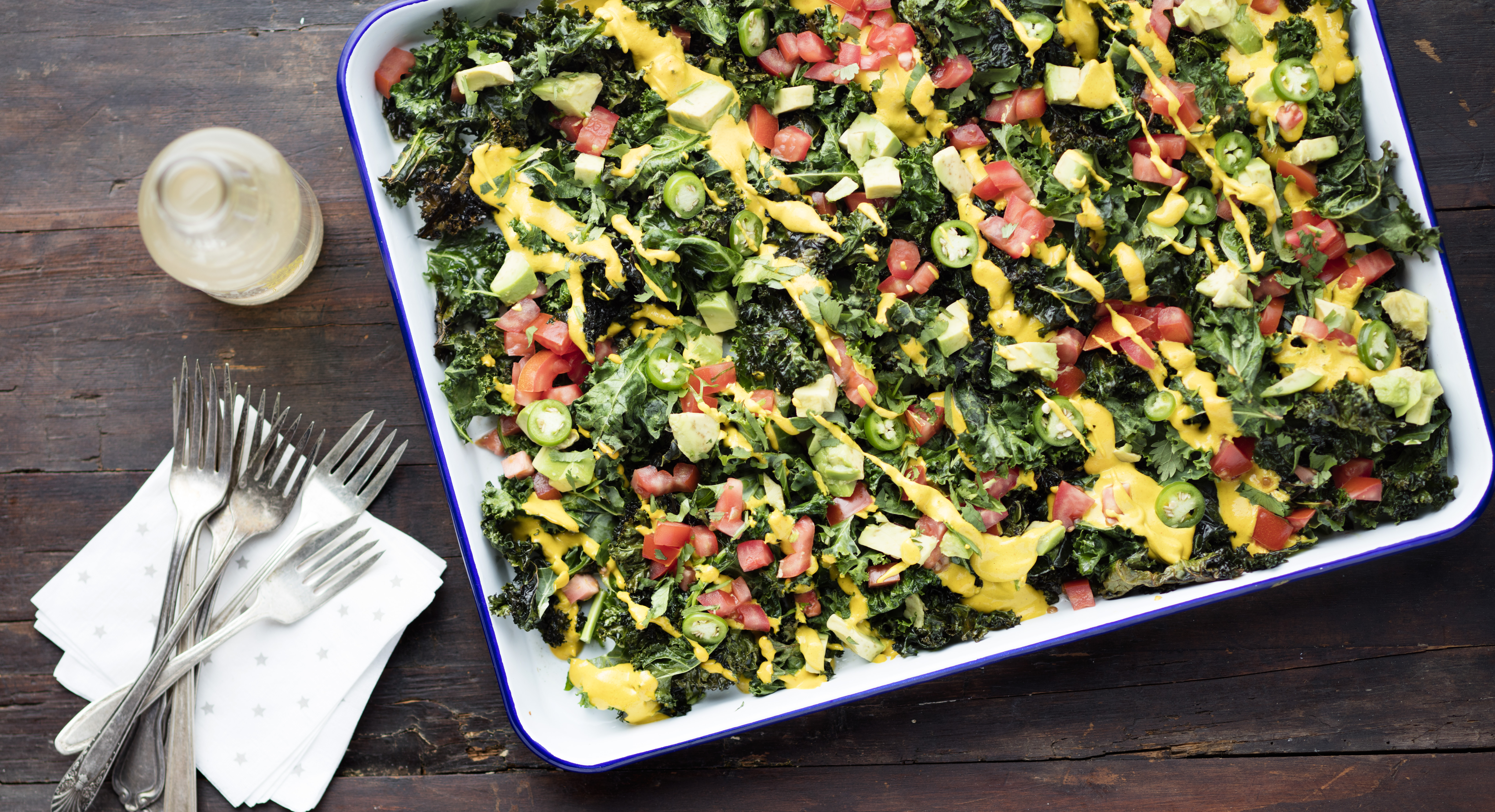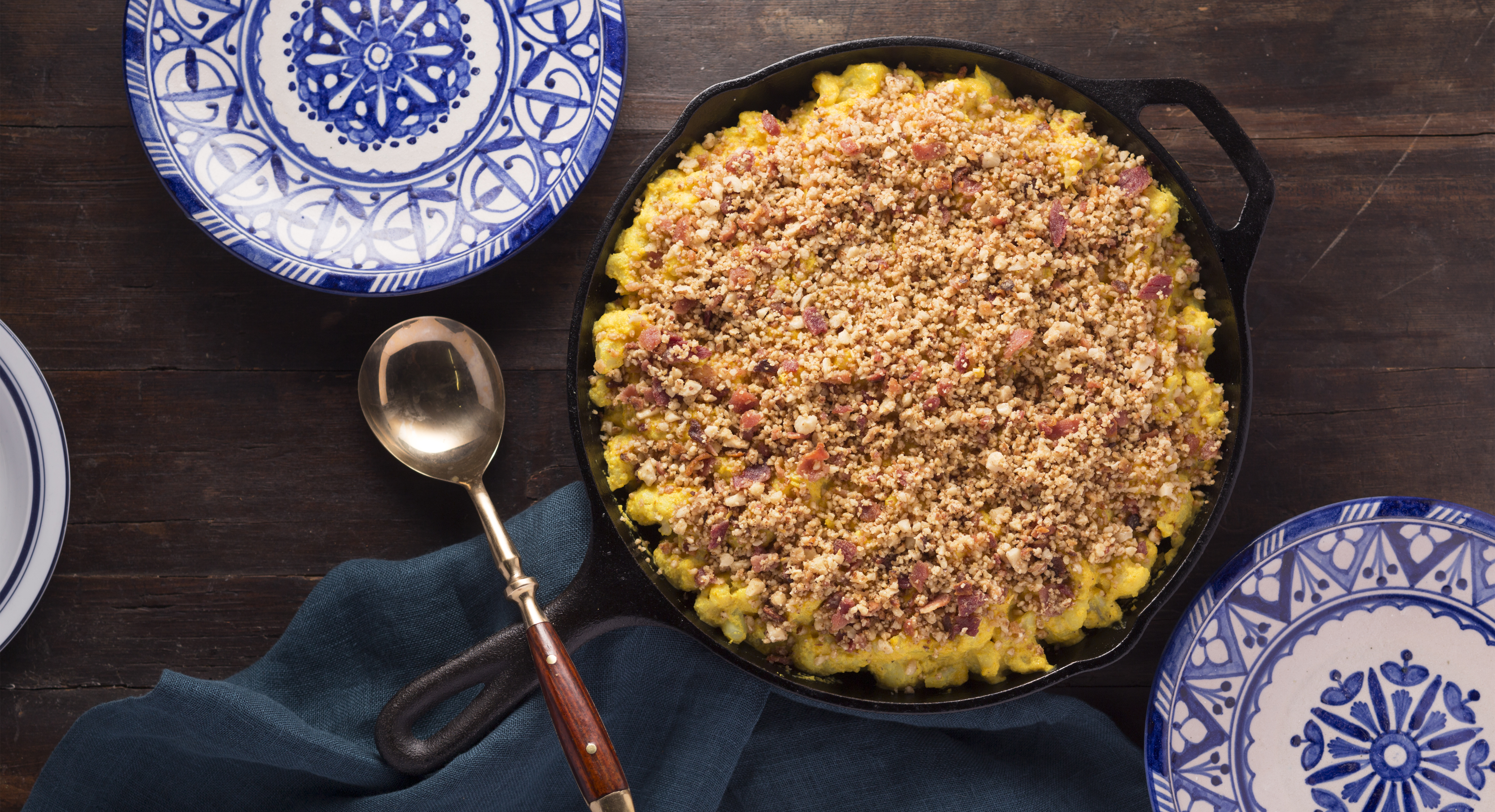Melty, gooey mozzarella. Creamy, tangy ricotta. Sharp, smoky aged cheddar. Perhaps no food inspires feelings of lust quite like cheese.
Thankfully, there’s a way for both vegans and dairy-free eaters to satisfy cheesy cravings—dairy-free cheese! Often made from nuts, seeds, and nutritional yeast, it can taste just like the real thing.
Here’s everything you need to know about making your own, including three life-changing, easy recipes.
Why give up cheese?
Most people give up cheese as part of a vegan diet, over concerns with treatment of animals, to benefit the environment, or for health reasons. The choice to give up any food is a personal decision, but let’s clarify why you might even consider it.
For environmental reasons
Even setting aside the ethical concerns of eating animal products, avoiding dairy products like cheese promises other environmental benefits. Dairy cows give off a good amount of the total greenhouse gases emitted by American agriculture.
Chief among those greenhouse gases is methane, the compound emitted by manure, feed production, and milk processing. Like carbon dioxide, methane warms the atmosphere and plays a part in rising global temperatures. The effects can be devastating—especially in areas with a high concentration of industrial dairy farms. In California’s San Joaquin Valley, for instance, the massive numbers of dairy cows have contributed to the nation’s worst air pollution, tainted water, and terrible odors.
Dairy cows also use a whole lot of water to produce milk, cheese, and butter—122, 381, and 665 gallons per pound, respectively. Compare that to a pound of broccoli, which takes just 34 gallons, or a pound of oranges, which needs just 67. (Not to mention, plants offset their carbon footprint by releasing oxygen.)
For health benefits
If you’re lactose intolerant, cutting out cheese and other dairy products could immediately solve a number of digestion-related problems. And odds are, you are—nearly 60 percent of the global population isn’t able to properly digest lactose. Nausea, indigestion, constipation, abdominal pain, cramps, and diarrhea are just some of the symptoms—not necessarily something you want to mess around with.
Even if you’re not sensitive to dairy, the benefits of going without can be significant. One Harvard study found that men who consumed more dairy had a higher risk of prostate cancer. Seasonal allergy sufferers might find relief by cutting down on dairy, according to some doctors. Dropping dairy can also be beneficial for your skin, too. Several studies have found an association between severe acne and milk consumption, though dermatologists say it’s too early to determine whether dairy could trigger acne.
If you’re eating a lot of unhealthy dairy products—think processed cheese sauce and ice cream—going dairy-free might even help you lose weight. Swapping out high-calorie, high-fat foods for fresh fruits and vegetables certainly will!
Different types of vegan cheese
Savvy cooks out there have come up with a few methods for making fromage without the dairy. Here’s what you need to know about the different types of vegan cheese.
Nut- or seed-based
Most vegan cheeses use some kind of nut or seed as a base. Naturally creamy cashews are a popular choice, though macadamia nuts, almonds, and sunflower seeds also work well. Simply blending nuts with a little water and seasoning in the food processor will yield a firm “cheese” perfect for forming into a sphere or log. Other recipes rely on a thickener—like tapioca flour or agar agar—to get nut-based cheeses to set.
To achieve a melted cheese texture, you’ll want to soak the nuts overnight first. If you’ve ever made homemade nut milk before, this part should sound familiar. Soaking not only softens the nuts, but also reduces phytic acid, an antinutrient that prevents the body from absorbing some vitamins and minerals. (Though the science is still unclear about how severe of a problem antinutrients might be, most experts recommend vegans, vegetarians, and others on restrictive diets try soaking nuts, seeds, and grains.)
Nutritional yeast–based
Nutritional yeast is made from sugar cane and beet molasses, then dried. It’s inactive, meaning it won’t leaven a loaf of bread. Plus, it’s loaded with B-complex vitamins—nutrients many vegans are deficient in—and low in saturated fat, cholesterol, and sodium.
Sure, the name sounds a little weird, but once you taste nutritional yeast, you’ll understand exactly why vegans love sprinkling it on everything. The rich umami flavor makes it a pretty convincing substitute for grated parmesan on its own, and most faux cheese recipes call for at least a bit of it. Vegan pro tip: use it as a popcorn topper for a delicious snack!
Zucchini-based
Already tried zucchini “noodles,” cauliflower “pizza,” and portobello “burgers”? Then we’ve found your next veggie substitute experiment: zucchini “cheese.”
Proponents of zucchini cheese say the finished product slices, melts, and tastes like the real deal. The standard recipe calls for a ton of zucchini, apple cider vinegar, oil, seasoning, and some vegan thickener to help it harden. Another variety uses cauliflower instead. Either takes a few hours in the fridge to set in a square pan, and can then be sliced into bite-sized pieces. Alternately, experiment with different molds—a round one can mimic the look of a wheel of cheese, but stars, hearts, or other shapes could be fun for kids.
As far as taste goes, fans of the recipe say it tastes similar to the real deal—and others say it just tastes like pureed vegetables. Add a little nutritional yeast for extra savory flavor.
Tofu-based
The best part about making tofu cheese is that the hard part—getting that crumbly texture—is already done for you. Pressing firm tofu to remove the extra liquid gives you a protein-dense food that’s reminiscent of feta. Just marinate it in flavorful herbs and spices—like in this recipe—for a feta substitute, or toss it into the blender to make vegan cream cheese.
Fermented
Dairy-based cheeses get their flavor and texture from an in-depth fermentation process. This method gives vegan products a tangy flavor similar to goat, although it takes longer (at least four days from start to finish) and involves creating your own starter culture. Adventurous cooks, this one’s for you!
First, the recipe requires sprouting grains like wheat or barley, then transferring them to a jar of room-temperature water and allowing them to sit for two or three days. Once the liquid starts to bubble and begins to taste a little sour and tangy, the lactic acid bacteria culture is ready.
Then, as in other nut-based cheese recipes, you soak raw cashews overnight. Blend them with a small amount of the culture, then allow the mixture to rest for two days at room temperature. Again, you’re looking for that tangy taste and, voila—your vegan cheese is good to go.
Three vegan cheese recipes
In our opinion, you can’t go wrong with a good cashew or macadamia nut cheese. The natural fats in nuts provide the creaminess of dairy cheese, and the mild flavors essentially mean they’re a blank slate. And nutritional yeast? It’s a must. These recipes—for a basic cheese log, queso sauce, and classic cheddar sauce—are not only easy enough for novice cooks, but also taste as good as the real thing. Once you’ve mastered them, try changing up the seasonings to make your own variations.
Basic Vegan Cheese Recipe
Parsley and sage lend freshness to a creamy, macadamia-based vegan cheese log, but you can customize the recipe to your own taste by changing up the herbs.
Yield: 6 servings
Active Time: 8 minutes
Ingredients
2 cups raw macadamia nuts
3/4 cup nutritional yeast
1 1/2 teaspoons onion powder
3/4 teaspoon garlic powder
Large pinch of sea salt
3 tablespoons water
2 teaspoons sage, finely chopped
1 small bunch parsley, minced
Instructions
Place nuts, nutritional yeast, onion powder, garlic powder, salt, and water in the bowl of a food processor fitted with the blade attachment. Process until creamy. Add a little more water if needed. Be careful, though—too much water, and it will become mushy. Fold in sage.
Roll mixture into 10-inch log and then roll log through minced parsley. Serve with crudités or crackers.
Vegan Queso Sauce Recipe
Food Editor Merce Muse originally developed this queso sauce for kale nachos, but it makes a delicious addition to everything from burrito bowls to tacos. It even looks like the real thing, thanks to bright yellow mustard and turmeric!
Yield: 4 servings
Active Time: 5 minutes
Ingredients
2 cups cashews, soaked overnight
1/4 cup nutritional yeast
1 tablespoon mustard
1 1/2 teaspoons turmeric
2 cloves garlic
1 teaspoon onion powder
Large pinch sea salt
1 tablespoon apple cider vinegar
3/4 teaspoon cayenne pepper
Instructions
Drain cashews of soaking water. Combine all queso ingredients in high-speed blender and blend on high until smooth. Add water 1 tablespoon at a time until the mixture reaches a thick, creamy consistency.
Serve drizzled over kale chips or tortilla chips for vegan “nachos”!
Classic Cheese Sauce Recipe
Created for our Paleo mac and cheese recipe, the original sauce includes ghee for extra buttery flavor. To keep things entirely plant-based, here we’ve swapped in butter-flavored coconut oil. The perfect accompaniment to pasta, this sauce also works well in casseroles or as a topping for sauteed vegetables.
Yield: 6 servings
Active Time: 5 minutes
Ingredients
2 cups cashews, soaked overnight
1 shallot, roughly chopped
3 tablespoons nutritional yeast
1/4 cup butter-flavored coconut oil
1 1/2 tablespoons tomato paste
2 tablespoon Dijon mustard
1 tablespoon lemon juice
1 tablespoon apple cider vinegar
1 teaspoon turmeric
1 teaspoon garlic powder
1 teaspoon onion powder
1/2 teaspoon cayenne pepper
1 1/2 teaspoons sea salt
Freshly ground black pepper
Instructions
Drain cashews from soaking water and place in the bowl of a food processor. Process with shallot, nutritional yeast, coconut oil, tomato paste, mustard, lemon juice, and apple cider vinegar. Add turmeric, garlic powder, onion powder, cayenne, salt, and pepper and process until completely homogenous and smooth. If needed, dilute with a bit of filtered water or coconut milk to achieve a creamy consistency.
So fear not, vegan friends—you don’t have to say goodbye to cheese forever. Creamy, savory dairy-free mozzarella, gouda, and feta await!
Photo credit: Paul Delmont


